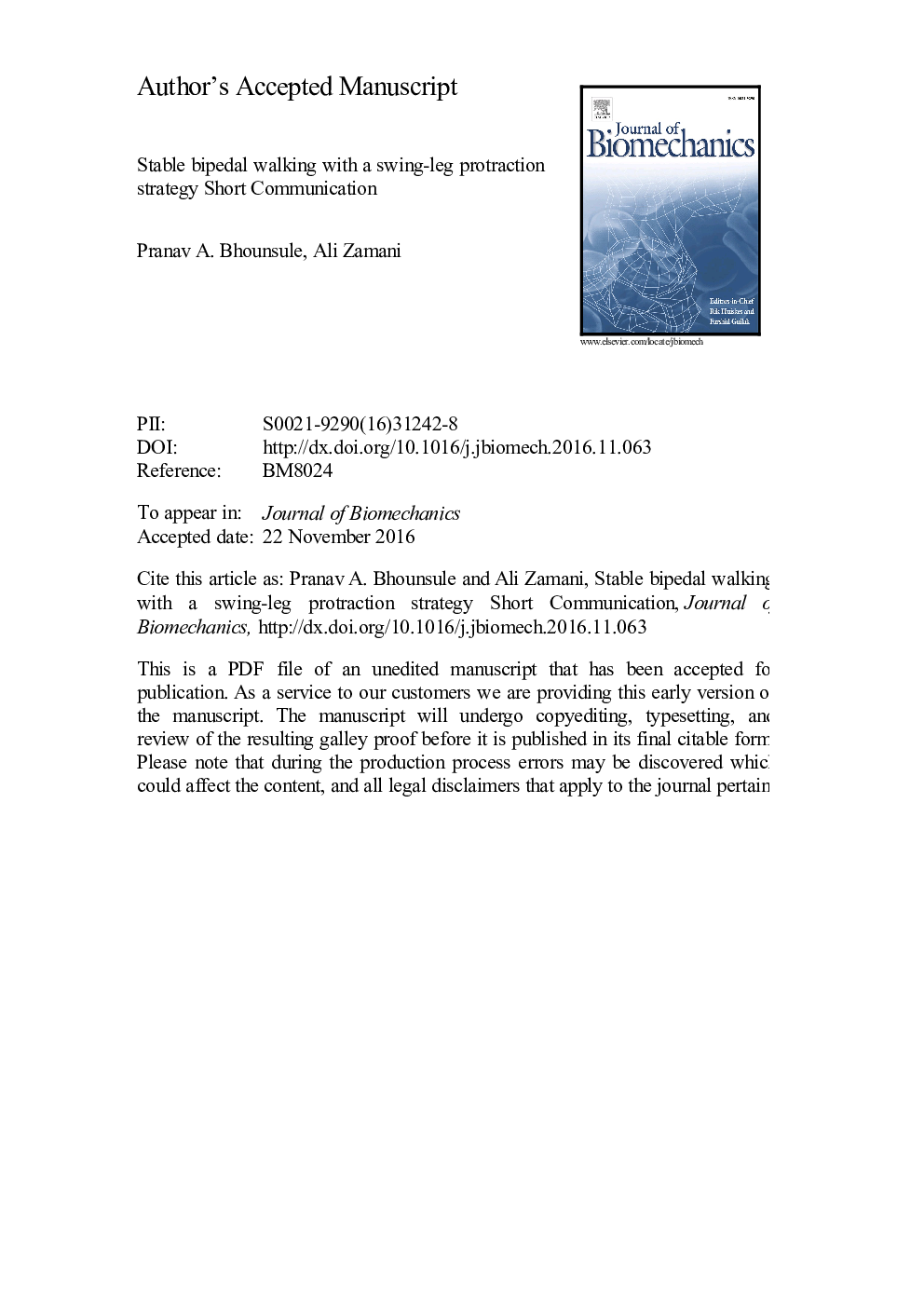| Article ID | Journal | Published Year | Pages | File Type |
|---|---|---|---|---|
| 5032084 | Journal of Biomechanics | 2017 | 10 Pages |
Abstract
In bipedal locomotion, swing-leg protraction and retraction refer to the forward and backward motion, respectively, of the swing-leg before touchdown. Past studies have shown that swing-leg retraction strategy can lead to stable walking. We show that swing-leg protraction can also lead to stable walking. We use a simple 2D model of passive dynamic walking but with the addition of an actuator between the legs. We use the actuator to do full correction of the disturbance in a single step (a one-step dead-beat control). Specifically, for a given limit cycle we perturb the velocity at mid-stance. Then, we determine the foot placement strategy that allows the walker to return to the limit cycle in a single step. For a given limit cycle, we find that there is swing-leg protraction at shallow slopes and swing-leg retraction at steep slopes. As the limit cycle speed increases, the swing-leg protraction region increases. On close examination, we observe that the choice of swing-leg strategy is based on two opposing effects that determine the time from mid-stance to touchdown: the walker speed at mid-stance and the adjustment in the step length for one-step dead-beat control. When the walker speed dominates, the swing-leg retracts but when the step length dominates, the swing-leg protracts. This result suggests that swing-leg strategy for stable walking depends on the model parameters, the terrain, and the stability measure used for control. This novel finding has a clear implication in the development of controllers for robots, exoskeletons, and prosthetics and to understand stability in human gaits.
Related Topics
Physical Sciences and Engineering
Engineering
Biomedical Engineering
Authors
Pranav A. Bhounsule, Ali Zamani,
